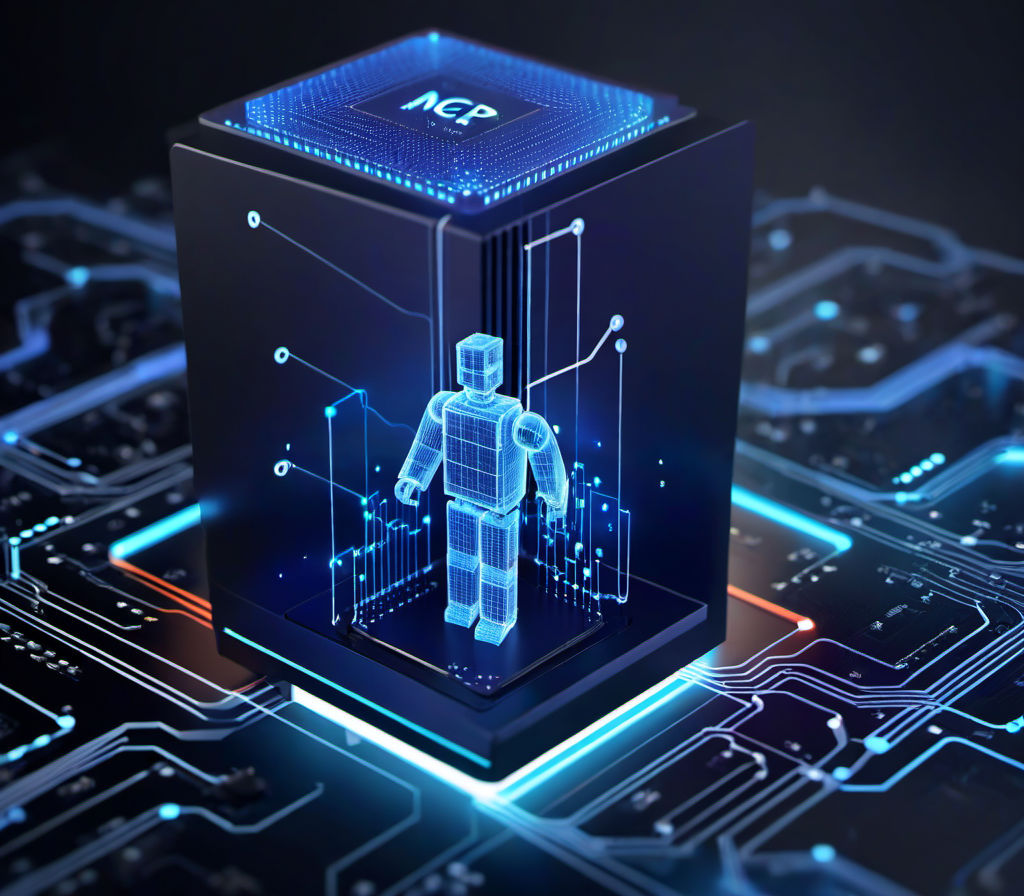This post was generated by an LLM
Listen
Creating a custom Model Context Protocol (MCP) Server allows developers to extend AI capabilities by integrating real-time data, tools, or external services into models like Claude. Below is an accelerated guide tailored for simplicity using the C# SDK as outlined in Microsoft Learn’s quickstart [8], with supplementary insights from other resources.
1. Understanding MCP: A Brief Overview
The Model Context Protocol (MCP) acts as a bridge between AI assistants and external systems, enabling them to access tools or data dynamically during interactions[4]. Think of it like plugging in peripherals via USB—each tool becomes accessible when needed [8].
For this crash course, we’ll focus on building a minimal MCP server using the C# SDK. This approach is recommended for its robustness and active community support (as noted by infracloud.io) [6], though alternatives exist with other languages or frameworks.
2. Prerequisites
Before starting:
- Install .NET Core, ensuring compatibility.
- Familiarize yourself briefly with C# syntax, as the SDK requires basic language knowledge[8].
- Ensure you have a code editor like Visual Studio Code (VSCode) installed for development.
3. Step-by-step Server Setup
Step A: Create Project Structure
Initialize your project using either command-line tools or VSCode extensions that support .NET projects [7]. For simplicity, use the following commands in terminal:
mkdir MyMCPserver && cd MyMcpServer
dotnet new console -n MCPExampleProject --use-program-main false # Adjust based on SDK version requirements.
This creates a basic project structure suitable for adding MVC components later[8].
Step B: Add Required Dependencies
Install the necessary NuGet packages via Package Manager Console or by editing your .csproj file. Key dependencies include:
- Microsoft.ML.ModelContextProtocol
- Any additional libraries required per specific tool integration (e.g., FastMCP for faster initialization) [3]
Example command: “`bash dotnet add package ModelContext.Protocol.CSharp –version 1.0.x
#### **Step C: Implement Server Logic**
Create a class that implements the `IMcpServer` interface provided by SDKs, defining how your server responds to client requests.
Here’s an illustrative snippet (adapted from Microsoft Learn's quickstart [8]):
csharp using ModelContext.Protocol;
public sealed partial class MyMCPserver : IMCPServer { public Task HandleRequestAsync(McpMessage request) => // Implement logic here, e.g., return hardcoded response or call external APIs. }
This skeleton handles incoming messages and can be expanded with custom tool integrations[10].
#### **Step D: Configure Server Settings**
Set up configuration files such as `mcp.json` to define server behavior (e.g. port numbers), authentication settings, etc.[7]. This file is crucial for defining how your MCP host interacts externally.
Example content:
json { “Server”: { “Port” :8091, … } “`
4: Testing Your Server
Once implemented and configured:
- Run the server using
dotnet runin terminal. - Use tools like Postman or custom client code to send test requests confirming your MCP endpoint is functional[6].
You can also integrate with GitHub Copilot for real-time assistance during development [8], enhancing productivity significantly.
5: Deployment Options
After testing locally, consider deploying remotely via platforms such as Cloudflare, which simplifies handling internet accessibility and permissions management compared to local setups. This method is especially useful if you plan on making your server publicly accessible[9].
However for initial learning purposes stick with simple deployment until confident in implementation details.
Conclusion
Building a custom MCP Server involves understanding its role within AI ecosystems, setting up appropriate development environments (like .NET), implementing core functionalities through SDKs provided by Microsoft or other vendors and finally testing thoroughly before deploying. While this guide focused on C# due to availability of comprehensive documentation from official sources [8], similar approaches apply across different languages as long they support MCP standards.
For further exploration, consider looking into advanced topics such as error handling mechanisms[6] which are essential for production-grade implementations but beyond scope here given the crash course nature.
https://m.youtube.com/watch
⚡Introducing MCP-Framework: Build a MCP Server in 5 minutes
byu/subnohmal inClaudeAI
https://www.kdnuggets.com/building-a-simple-mcp-server
https://akoskm.com/build-an-mcp-server-from-scratch/
https://m.youtube.com/watch
https://www.infracloud.io/blogs/build-your-own-mcp-server/
MCP using C# SDK: Create Your First Local MCP Server in VS Code
https://learn.microsoft.com/en-us/dotnet/ai/quickstarts/build-mcp-server
https://blog.cloudflare.com/remote-model-context-protocol-servers-mcp/
Build a Model Context Protocol (MCP) server in C#
https://bibek-poudel.medium.com/what-is-mcp-and-how-to-create-your-own-mcp-server-a-simple-guide-7b509ede1fed
https://www.builder.io/blog/mcp-server
https://medium.com/@eugenesh4work/how-to-build-an-mcp-server-fast-a-step-by-step-tutorial-e09faa5f7e3b
https://dev.to/composiodev/how-to-build-mcp-servers-and-clients-from-scratch-4o2f
https://developers.cloudflare.com/agents/guides/remote-mcp-server/
This post has been uploaded to share ideas an explanations to questions I might have, relating to no specific topics in particular. It may not be factually accurate and I may not endorse or agree with the topic or explanation – please contact me if you would like any content taken down and I will comply to all reasonable requests made in good faith.
– Dan

Leave a Reply